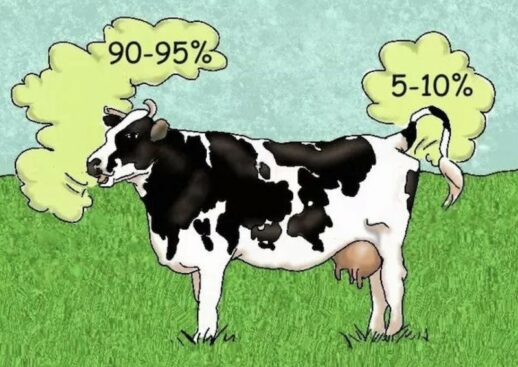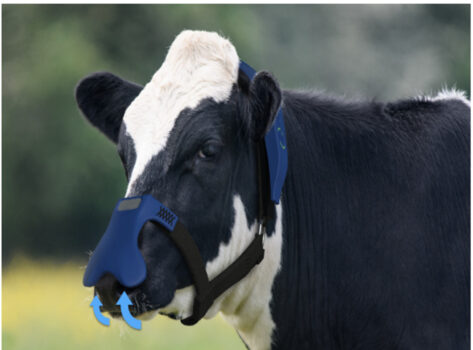Recently, a British technology company has developed a “face mask” specially designed for cattle to reduce methane produced by cow hiccups and thus carbon emissions. At present, the project is still in the research and development state, and the research and development team aims to reduce methane emissions from cattle by 60%.
Wear a mask for cattle. What is “ox emission-reducing mask”?
According to reports, this mask is tied to the head of cattle, which can be resized according to the breed of cattle.
The front end of the mask is equipped with sensors to monitor the concentration of methane emissions from cattle exhalation.
When the methane content is too high, the mask absorbs the gas exhaled by the cow, and oxidizes the methane through the catalyst, which is converted into carbon dioxide and water, ultimately achieving the goal of reducing methane emissions.
According to the company’s completed experiments, “ox emission reduction masks” have no impact on cattle behavior and feeding. “A cow-reducing reducing masks can reduce the greenhouse effect of methane by about 1.5%,” said the company’s head.
How much carbon emissions does raising cattle produce? Why bother so much?
According to the article published in the academic journal Climate Risk Management in 2017, the total global livestock emissions account for 14.5% of all-owner greenhouse gas emissions. About 44% of livestock emissions are in the form of methane (CH4).
The rest is almost nitrous oxide (N2O, 29%) and carbon dioxide (CO2, 27%).
If measured by carbon dioxide emissions, livestock emissions are 18% higher than various automobiles.
Question 1: Masks only turn methane into carbon dioxide. Where can carbon emissions be reduced?
A: Because methane has a more greenhouse effect than carbon dioxide.
Research shows that methane is a greenhouse gas that is more dangerous than carbon dioxide, and as the global frozen soil warms up, more methane enters the atmosphere.
Although there are many ways to seal carbon dioxide, there are relatively few ways to deal with methane. The best way now is to control cattle and sheep farming and deforestation and fundamentally reduce methane emissions.
A 2020 U.S. Environmental Protection Agency report shows that the greenhouse effect of methane, the main greenhouse gas emitted by livestock, is 28-36 times higher than carbon dioxide.
Question 2: Why do you have to wear a mask?
A: Because in the breeding process of cattle, most methane is discharged through “burp”.

In fact, 90% to 95% of the methane gas released by cattle is excreted through the mouth, while the other 5% to 10% are released in the form of faeces and farting.
Ruminants such as cattle and sheep have multiple stomach ventricles to ruminate and digest and decompose cellulose in plants.
Various microorganisms in the ruminant stomach will produce a large number of by-products – methane, while decomposing cellulose.
According to statistics, the annual methane emissions of a cow can reach 110.7 kg.
Worldwide, more than a billion cows emit methane every day, which can be predicted.
According to a 2016 treatise published in the internationally renowned academic journal Cleaner Production, the carbon emissions from meat production are generally higher than that of plants in all foods.
Chicken and pork are lower in meat, and beef and mutton are higher. If a person eats 1 kg less pork in a week and eat vegetables instead, he will reduce carbon dioxide emissions by 0.7 kg, and reduce carbon dioxide emissions by 36.4 kg a year.
Cow Mask
Cow Mask According to the recently released Report on Nutrition and Chronic Diseases in China (2020), the proportion of overweight and obesity among Chinese adults exceeds 50%, the proportion of overweight and obesity among children and adolescents aged 6-17 is nearly 20%, and the value for children under 6 years old reaches 10%.
It seems that nutritionists suggest that the intake of meat food should be controlled correctly and reasonably, and the increase of vegetable intake not only has the effect of losing weight, but also can also reduce “carbon”, which is healthy and environmentally friendly.



